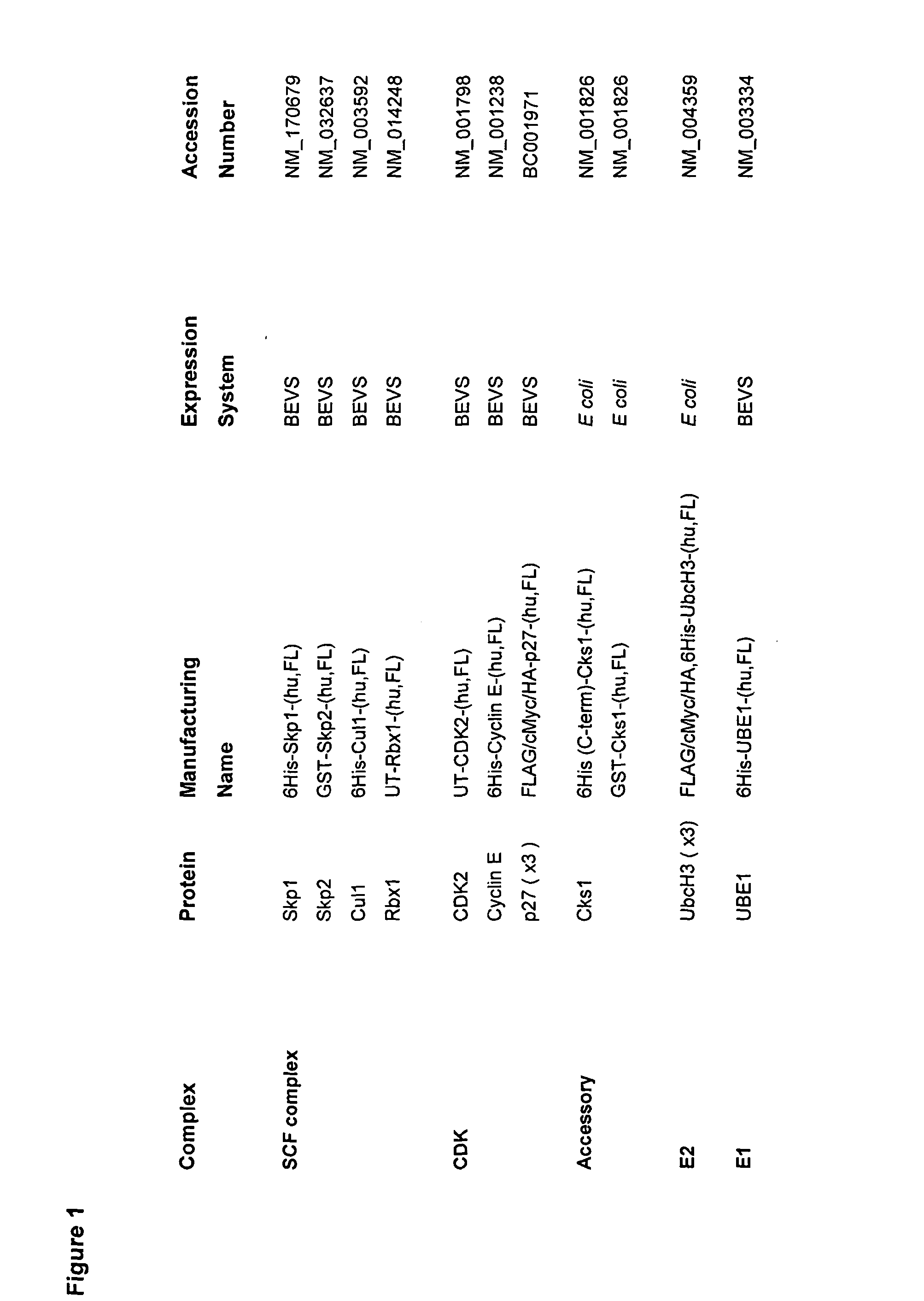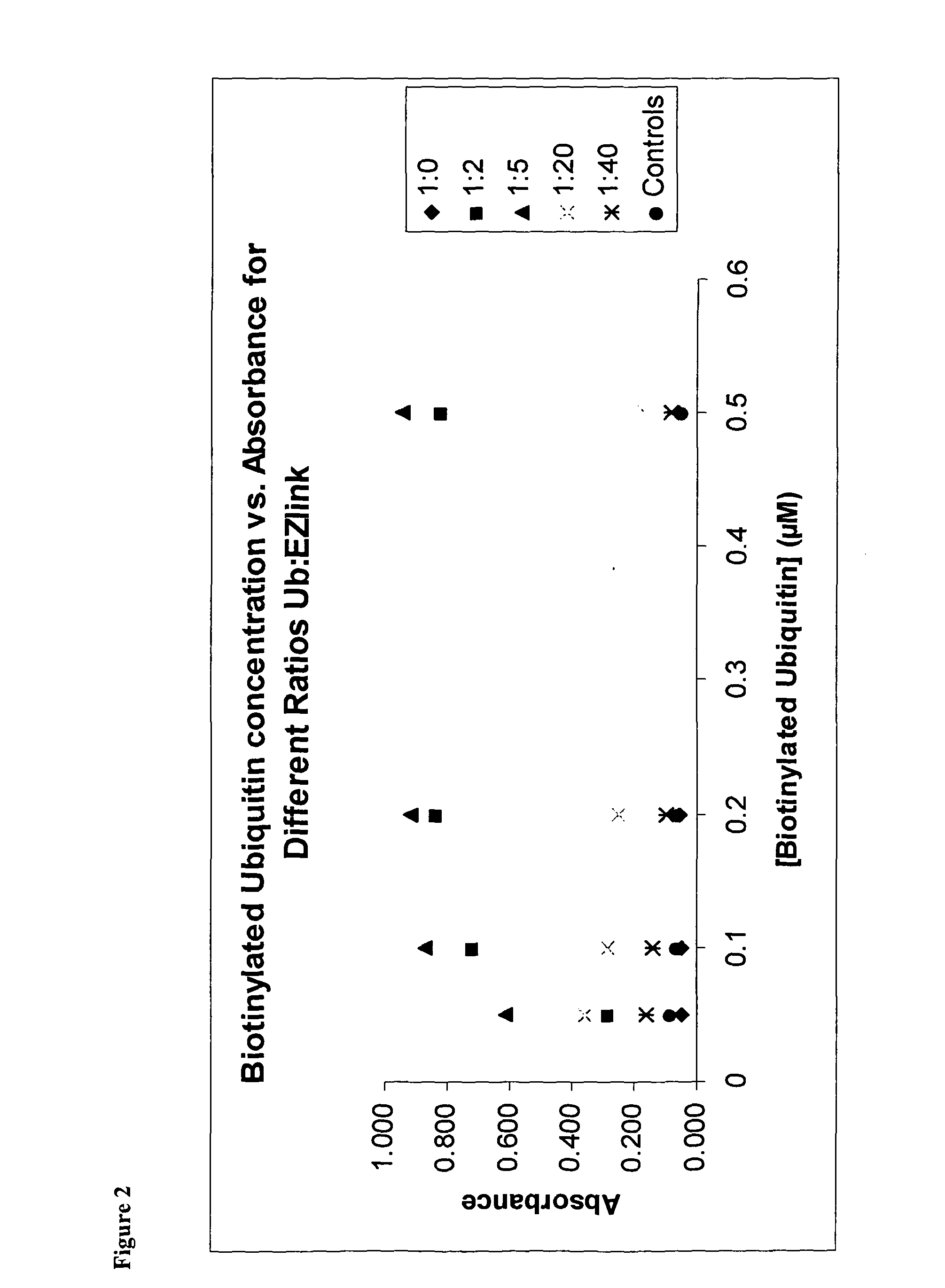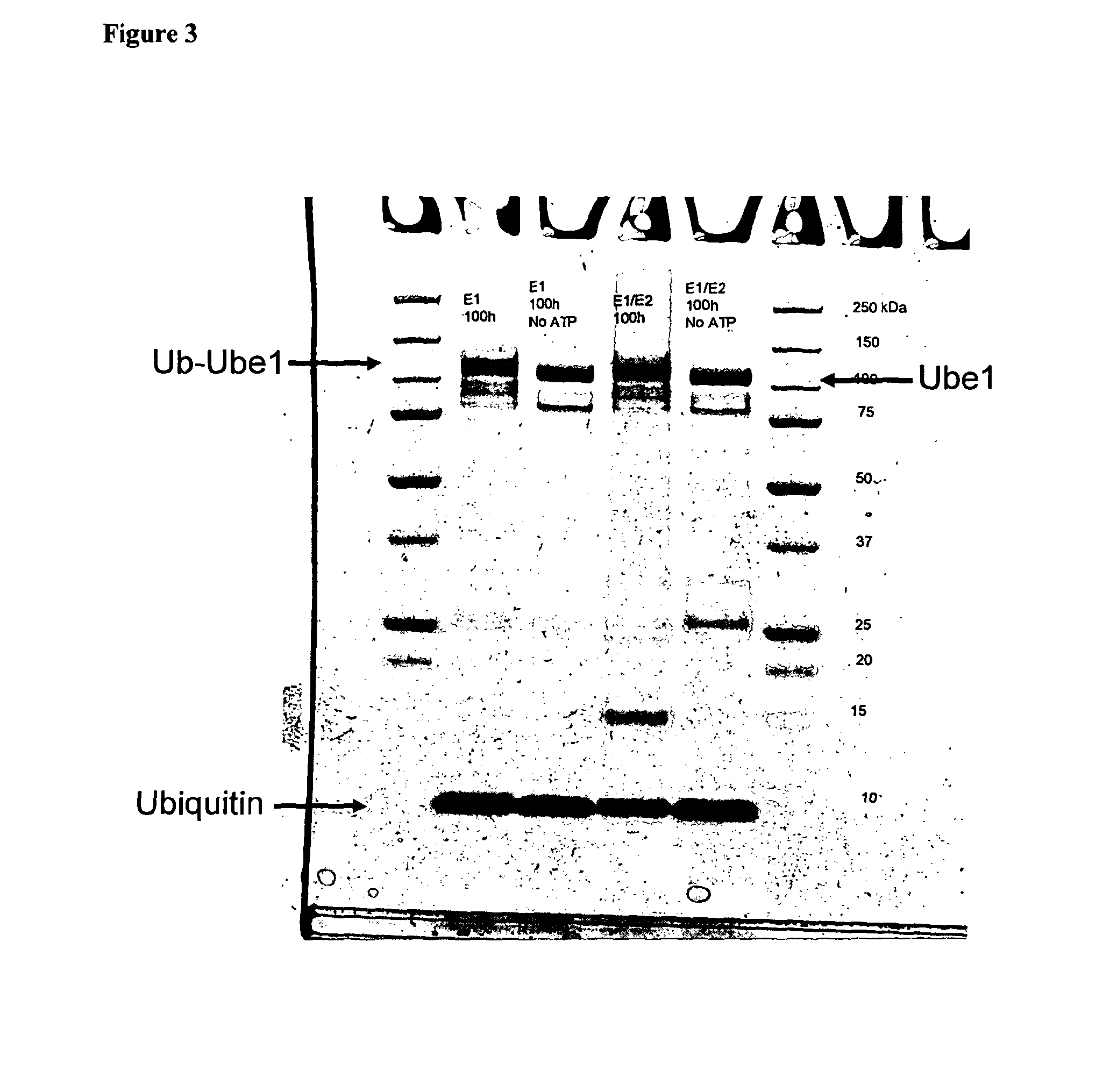Ubiquitination assay
a technology of ubiquitination and assay, applied in the field of assays, can solve the problems of inability to distinguish which particular event in the ubiquitination cascade is affected, inability to perform high-throughput screening, and limited use of assays
- Summary
- Abstract
- Description
- Claims
- Application Information
AI Technical Summary
Benefits of technology
Problems solved by technology
Method used
Image
Examples
Embodiment Construction
[0230]Coding sequences used throughout this study were cloned and validated against appropriate GenBank entries (FIG. 1).
[0231]Molecular weights of purified proteins were confirmed by SDS PAGE followed by Western blot analysis.
Assay Development Pilot: Components Upstream of E3
[0232]Initial experiments in the pilot phase focussed on establishing that the components upstream of the E3 are active, and then optimising the levels of each component required so that we limit the variables for the E3 assay.
[0233]The majority of assays require the use of biotinylated ubiquitin in order to recruit streptavidin linked reporter molecules. Biotinylation reactions were carried out and assessed by ELISA to determine optimal biotin:ubiquitin ratios (FIG. 2).
[0234]Results showed that using a labelling ratio of either 2:1 or 5:1 biotin:ubiquitin provided the best signal by ELISA. Higher ratios were detrimental, and lower ratios look to be inefficient.
Positive Controls of Ubiquitinated E1 and / or E2
[02...
PUM
| Property | Measurement | Unit |
|---|---|---|
| temperature | aaaaa | aaaaa |
| temperature | aaaaa | aaaaa |
| temperature | aaaaa | aaaaa |
Abstract
Description
Claims
Application Information
 Login to View More
Login to View More - R&D
- Intellectual Property
- Life Sciences
- Materials
- Tech Scout
- Unparalleled Data Quality
- Higher Quality Content
- 60% Fewer Hallucinations
Browse by: Latest US Patents, China's latest patents, Technical Efficacy Thesaurus, Application Domain, Technology Topic, Popular Technical Reports.
© 2025 PatSnap. All rights reserved.Legal|Privacy policy|Modern Slavery Act Transparency Statement|Sitemap|About US| Contact US: help@patsnap.com



